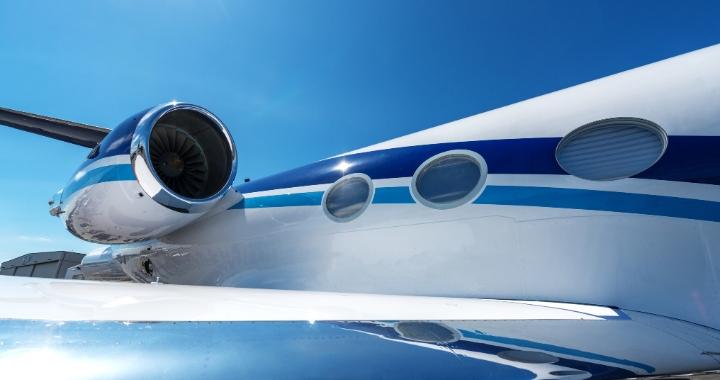Flying an aircraft is an amazing feat that requires careful planning and consideration of many factors to ensure a smooth and safe flight. Pilots have a huge responsibility to make sure that they and their passengers arrive at their destination without issue. This means thinking through everything that could impact the performance of the aircraft from the moment it leaves the ground until the moment it returns. Things like air temperature, pressure, and humidity all come into play and need to be assessed before takeoff and landing.
In this post, we will be discussing one value that is critical for pilots to understand: Density Altitude. As a pilot considers the different elements that could influence how an aircraft behaves, density altitude is one measurement they must pay close attention to. It provides key insight into the actual density of the air and what that means for aircraft performance during the most critical phases of flight – takeoff and landing. Gaining clarity on what density altitude is and why it is so important can help pilots make safer decisions in the air.
Before you dive in, be sure to check out our range of Jetbeds. Made in the USA, Jetbeds are the most comfortable way to fly!

What Is Density Altitude?
In aviation, there are a few different types of altitude that are important for pilots to distinguish. The main altitudes referred to are:
- Indicated Altitude: What is read directly from the aircraft’s altimeter, which is simply the physical height above sea level.
- Pressure Altitude: This takes into account differences in atmospheric pressure from the standard setting of 29.92 inches of mercury. Pilots correct the indicated altitude to a pressure altitude to obtain uniform altitude readings regardless of variations in barometric pressure.
- Density Altitude: This is the focus of our discussion. Density altitude refers to the altitude in the Standard Atmosphere where the air density is the same as the actual air density being experienced. Density altitude is pressure altitude corrected for non-standard temperature and is a measure of aircraft performance.
Density altitude is important because it indicates the effect that outside air temperature and humidity have on aircraft performance. Even though an aircraft may be operating at a lower physical altitude, density altitude takes into consideration how thin the air feels based on conditions. This allows pilots to assess how their aircraft will handle during critical phases like takeoff and landing in different environmental situations.
Aircraft performance is greatly impacted by density altitude because as air density decreases, wing lift and engine power decrease as well. On hot, humid days, taking off from a field that is actually at 1,000 feet can feel like taking off from an elevation of 2,000 or 3,000 feet in standard air. This requires longer takeoff rolls and a higher rate of climb to clear obstacles after takeoff.
Pressure Altitude vs. Density Altitude
While pressure altitude and density altitude are related, there is an important distinction between the two measurements. Pressure altitude strictly considers air pressure relative to the standard pressure of 29.92 inches of mercury. It is the baseline for standardized barometric pressure readings removed from weather factors.
Density altitude goes a step further by incorporating temperature into the calculation of equivalent altitude. This matters because temperature greatly impacts air density – hot air is less dense than cold air. Even at the same pressure altitude, hotter temperatures mean reduced air density, translating to lower performance for aircraft. The higher the temperature at a given pressure altitude, the higher the density altitude will be.
For example, an airport sitting at 5,000 feet pressure altitude on a standard day would have a density altitude matching its pressure altitude. But on a hotter day, that same airport could see a density altitude of 6,000 or 7,000 feet due to lower air density from elevated temperatures, despite no change in pressure altitude. This demonstrates why density altitude is a more useful indication of performance for pilots relative to pressure altitude alone. It provides a truer representation of aircraft handling based on current atmospheric moisture and heat levels.

What Effect Does Density Altitude Have On Aircraft Performance?
Increases takeoff roll and ground run.
High-density altitudes mean the air is less dense, so aircraft wings generate less lift at a given airspeed. This makes it harder for aircraft to get off the ground. Pilots must compensate with longer takeoff rolls and ensure adequate runway length is available.
Decreases rate of climb.
Thinner air provides less atmospheric pressure helping aircraft climb. Lower density altitudes allow for quicker vertical acceleration after takeoff. Higher density altitudes reduce climb performance, making obstacles harder to clear.
Lowers cruise performance.
At high altitudes, aircraft engines must work harder to get the same amount of thrust. Propeller aircraft turn slower and jet aircraft produce less power. Both negatively impact speed, payload capacity, and overall cruise efficiency.
Lengthens landing roll.
Like takeoff, landing in high-density air adds drag and reduces lift over wings. Aircraft must fly at higher approach speeds and need more runway to bleed off altitude and stop after touchdown.
Lowers service ceiling.
The maximum altitude an aircraft can reach is limited by air density. Higher density altitude effectively lowers the ceiling, disallowing certain routes, and airports, or reducing cargo weight ability.

How To Determine Density Altitude
Step 1: Measure field pressure altitude.
When calculating density altitude, pilots must first determine pressure altitude by setting the altimeter to a standard pressure of 29.92 inches of mercury and reading the altitude. This provides the base pressure altitude of the airport.
Step 2: Obtain temperature.
Portable temperature probes or on-site measurements determine the current air temperature in degrees Celsius or Fahrenheit.
Step 3: Use a Density altitude chart or calculator.
Aviation charts or online calculators take the pressure altitude and temperature to derive density altitude based on the formula:
Density Altitude = Pressure Altitude + [120(Temperature – Standard Temperature)]
Step 4: Account for humidity.
Some charts or programs factor humidity into the equation. This further lowers air density at elevated moisture levels.
Step 5: Determine Total Density Altitude
The result indicates an equivalent altitude that specifies aircraft performance based on existing atmospheric conditions measured through pressure, heat, and humidity. Pilots use this figure for takeoff and landing performance planning.
Proper measurement of airfield variables and correct usage of reference tools ensure pilots obtain an accurate density altitude representation. This empowers safe operational decision-making.
Density Altitude Chart

(source)
How To Use Density Altitude Chart
Locate the pressure altitude.
Find the pressure altitude reported for your airport runway elevation based on the current altimeter setting along the left side of the chart.
Take note of the outside air temperature.
Use an on-site thermometer or automated weather reading to find the actual air temperature in degrees Celsius or Fahrenheit at the top.
Follow the diagonal lines.
Trace the slanted isothermal lines extending from the pressure altitude and temperature figures to discover density altitude.
Consider humidity effects.
Account for dew point temperatures and use steeper diagonals for higher moisture when humidity reduces air density further.
Apply to performance planning.
Refer to aircraft manuals using the chart-derived density altitude. Adjust takeoff and landing performance calculations along with other factors like climb rates accordingly.
Density altitude charts provide a simple graphical means for pilots to determine the impact current weather has on air quality in terms of a corresponding elevation. Following the proper technique ensures accurate interpretation to feed into consequential operational decisions.
Knowledge of density altitude is the basis for safer flights.
Understanding density altitude and how it is calculated from air temperature, pressure, and humidity is essential for pilots. It helps to make assessing aircraft performance and safety aspects like takeoff and landing distance easier. It also provides a measure of the actual air density pilots and controllers can expect, helping ensure a safe and successful flight.
For more information on all things around aviation technology from answers to questions like What is AQP in Aviation to updates on Safety Management Systems in Aviation, check out our blog. And, if you’re looking for an easy and convenient tool that will help you and your crew avoid flight fatigue, explore our fleet of JetBeds to find the one that best suits your aircraft and lifestyle.

